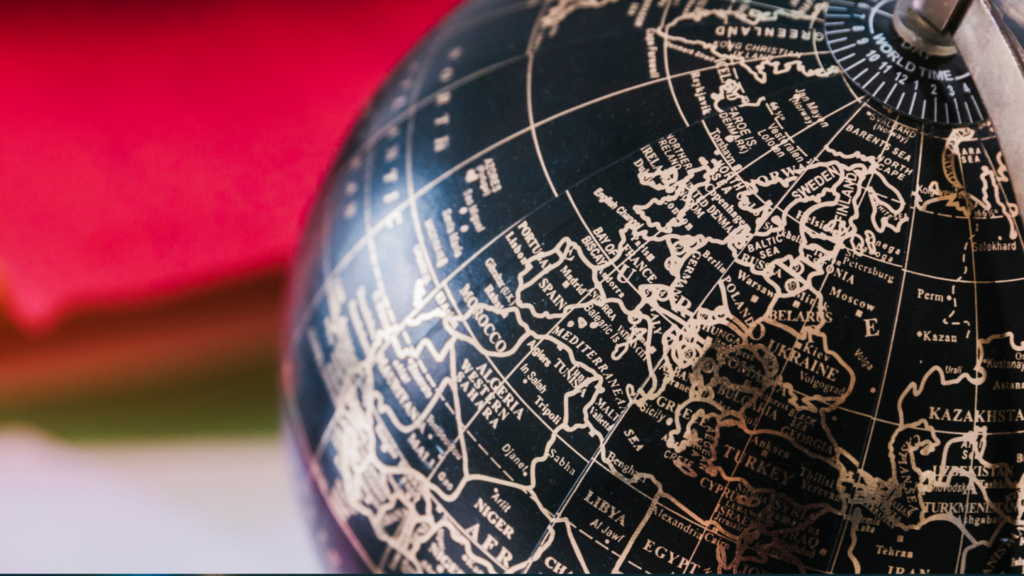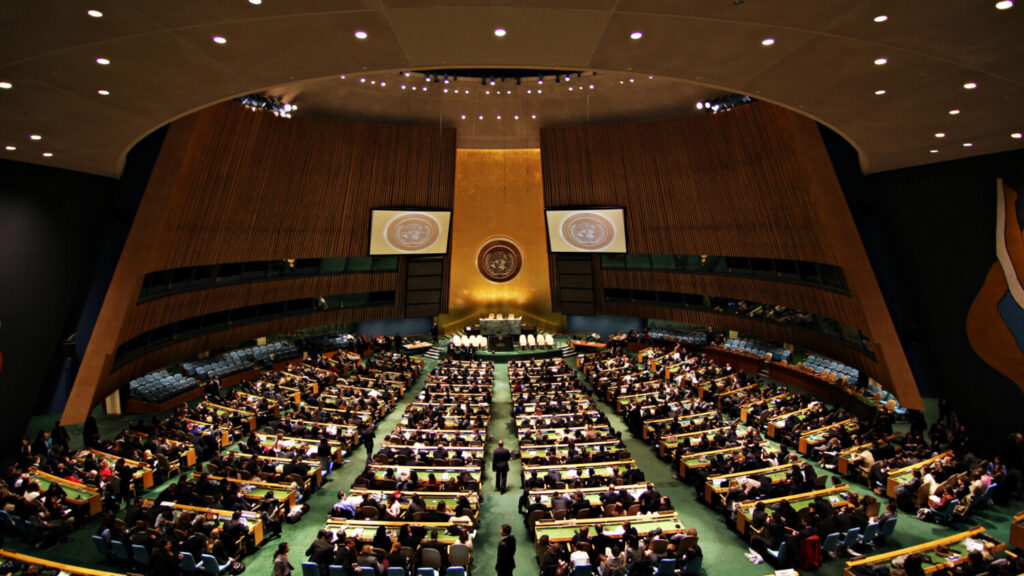The New Middle East Order: Turkey’s Rise, Iran’s Pivot, and the End of the Old Axis
The tectonic plates of Middle Eastern geopolitics shifted dramatically in December 2024 when Bashar al Assad boarded a plane and left Syria after five decades of his family’s brutal rule. But this watershed moment tells only half the story. While Damascus burns and rebuilds, Tehran is quietly executing perhaps the most consequential strategic pivot in modern Iranian history, turning decisively away from the West and embedding itself into Eurasian economic architecture. Together, these parallel transformations reveal a region being remade not through grand summits or peace treaties, but through the cold mathematics of power, trade, and survival. This article explores how these twin events — Syria’s collapse and Iran’s eastern pivot — together mark a profound reordering of regional power.
Syria: The Unravelling of an Axis
Assad’s departure wasn’t just the fall of a dictator. It was the collapse of a carefully constructed axis that linked Tehran to Beirut through Damascus, giving Iran strategic depth and Hezbollah a vital supply corridor. For over a decade, Iran poured billions into propping up Assad’s regime, viewing Syria as indispensable to its regional influence. That investment has now evaporated.
Turkey has emerged as the clear winner. Ankara backed the rebel factions that ultimately toppled Assad and now finds itself with unprecedented influence over Syria’s interim government. This isn’t merely about military victories, Turkey hosts nearly 3 million Syrian refugees, and Assad’s fall offers the tantalizing possibility of their return. Already, over 474,000 Syrians have crossed back from Turkey since September, with official figures suggesting 250,000 more returned from various countries since December 2024. These aren’t just statistics; they represent families believing, perhaps for the first time in over a decade, that home might be liveable again.
But Syria’s transformation is far from a Turkish coronation. The country remains fractured, with Kurdish forces controlling the northeast, remnants of Assad’s military apparatus scattered across government held territories, and the ever-present spectre of Islamic State cells waiting for opportunities in the chaos. Russia, Assad’s other major patron, is desperately trying to maintain its naval base in Tartus and airbase in Khmeimim, crucial Mediterranean footholds that justify its entire Middle Eastern strategy.
What’s striking is Iran’s sudden vulnerability. For years, Tehran projected power through proxies: Hezbollah in Lebanon, various militias in Iraq, the Houthis in Yemen, and Assad’s forces in Syria. With Damascus no longer a reliable partner, that network looks dangerously fragile. Israeli strikes have already degraded Hezbollah’s capabilities significantly, and without the Syrian corridor, resupplying the Lebanese militia becomes exponentially harder. Iran’s “Axis of Resistance” increasingly looks like a concept without a geographic reality.
Iran’s Eurasian Gambit
With its influence in the Levant diminished and its traditional networks weakened, Tehran has turned inward, seeking stability through economic rather than military means. Perhaps this explains Tehran’s dramatic economic reorientation. In May 2025, a full-fledged free trade agreement between Iran and the Eurasian Economic Union came into force, slashing average import duties from 20% to just 4.5%. Iran had joined the Shanghai Cooperation Organization in 2023, and now this EAEU integration represents another major step in Tehran’s pivot toward Russia, China, and Central Asia.
The numbers tell a remarkable story. Iranian oil exports to China have exploded from an average of 339,400 barrels per day in 2020 to 1.7 million barrels per day in the first half of 2025, a nearly 400% increase. Beijing has become the lifeline keeping Iran’s economy afloat despite crushing Western sanctions. This isn’t just about energy either. Iran is actively seeking new trade corridors through Central Asia to reduce its vulnerability to the Strait of Hormuz, through which much of its commerce currently flows.
This reorientation is both defensive and opportunistic. Western sanctions have made trade with Europe and much of the developed world nearly impossible, so Iran is building alternative pathways. The EAEU agreement opens access to markets in Russia, Kazakhstan, Belarus, Armenia, and Kyrgyzstan, not enormous economies individually but collectively representing significant opportunities. More importantly, it signals Iran’s long-term strategic calculation: if the West won’t trade with Tehran, Tehran will build a parallel economic system.
Yet this pivot carries risks. Iran becomes increasingly dependent on China, which holds enormous leverage through its oil purchases. Beijing has shown no hesitation in driving hard bargains with vulnerable partners. The Eurasian Economic Union, while functional, operates at nothing like the scale or efficiency of European markets. Iran might find its new economic partners less wealthy, less technologically advanced, and more demanding than it hoped.
Two Stories, One Narrative
These twin transformations, Syria’s implosion and Iran’s eastward turn, are intimately connected. Assad’s fall demonstrates the limits of Iranian power projection. The costly Syrian intervention bought Tehran nothing permanent. When the regime finally collapsed, Iran couldn’t or wouldn’t save it. This failure in the Levant makes the Eurasian pivot all the more urgent. If Tehran can’t dominate through military proxies, perhaps it can survive through economic integration.
Turkey’s rise and Iran’s retrenchment are reshaping regional dynamics in ways that may prove more durable than military interventions ever were. Ankara is positioning itself as a stabilizing force in Syria, with potential economic benefits flowing from reconstruction contracts and refugee returns. Meanwhile, Iran is accepting its diminished regional military footprint by doubling down on economic survival through Asian partnerships. The irony is profound. For decades, Iran styled itself as the revolutionary power challenging American hegemony across the Middle East. Now, pushed out of Syria and squeezed by sanctions, it’s becoming increasingly dependent on the very great powers, China and Russia, that view Iran not as a partner but as a client state with valuable resources and useful geographic position.
Syria’s future remains uncertain. Its interim government faces monumental challenges in establishing security, rebuilding infrastructure, and convincing millions of refugees that return is possible. Iran’s Eurasian pivot may provide economic breathing room, but it also represents a strategic retreat from decades of regional ambitions. The Middle East that emerges from these transformations will likely be less dominated by ideology and more shaped by the hard realities of economics, refugee flows, and energy markets. The question is no longer whether the Middle East is changing, it already has. What remains to be seen is whether this new order, built on trade and pragmatism rather than ideology, can endure, or whether it’s merely the calm before another storm.
Bibliography
- Al Jazeera (2024). ‘What happened in Syria? How did al-Assad fall?’. Al Jazeera. https://www.aljazeera.com/news/2024/12/8/what-happened-in-syria-has-al-assad-really-fallen
- Ferris, E. (2025). ‘Syrian Refugees in Turkey: Prospects for Return or Integration?’. Baker Institute. https://www.bakerinstitute.org/research/syrian-refugees-turkiye-prospects-return-or-integration
- Global Crisis Response Platform (2025). ‘Syrian Regional Refugee Resilience and Response Plan 2025’. Global Crisis Response Platform, IOM, UN Migration. https://crisisresponse.iom.int/response/syria regional-refugee-resilience-and-response-plan-2025
- Iran International (2025). ‘Iran’s June oil exports to China surge as demand rises’. Iran International. https://www.iranintl.com/en/202506272976
- Levesque, E. (2025). ‘Seaborne oil exports from Iran to China hit record levels’. Arabian Gulf Business Insight. https://www.agbi.com/analysis/oil-and-gas/2025/04/seaborne-oil-exports-from-iran-to-china hit-record-levels/
- Loft, P. & Mills, C. (2025). ‘Syria after Assad: Consequences and interim authorities 2025’. House of Commons Library, UK Parliament. https://commonslibrary.parliament.uk/research-briefings/cbp 10161/
- Press TV (2025). ‘Iran, EAEU sign 3-year roadmap to implement free trade deal’. Press TV. https://www.presstv.ir/Detail/2025/09/24/755660/Iran-EAEU-roadmap-document-signing
- Seigle, C. (2025). ‘Trade War Reduces Washington’s Leverage on Iranian Oil Exports’. Center for Strategic & International Studies. https://www.csis.org/analysis/trade-war-reduces-washingtons-leverage iranian-oil-exports
- Turkish Minute (2025). ‘UN estimates 700,000 Syrians will return to Syria from Turkey by end of 2025’. Turkish Minute. https://turkishminute.com/2025/06/12/un-estimates-700000-syrians-will-return-to syria-from-turkey-by-end-of-2025/
- Operational Data Portal (2025). ‘Syria Regional Refugee Response’. UNHCR. https://data.unhcr.org/en/situations/syria/location/113
- UNHCR (2024). ‘Global Trends Report 2024’. UNHCR, The UN Refugee Agency. https://www.unhcr.org/global-trends-report-2024



